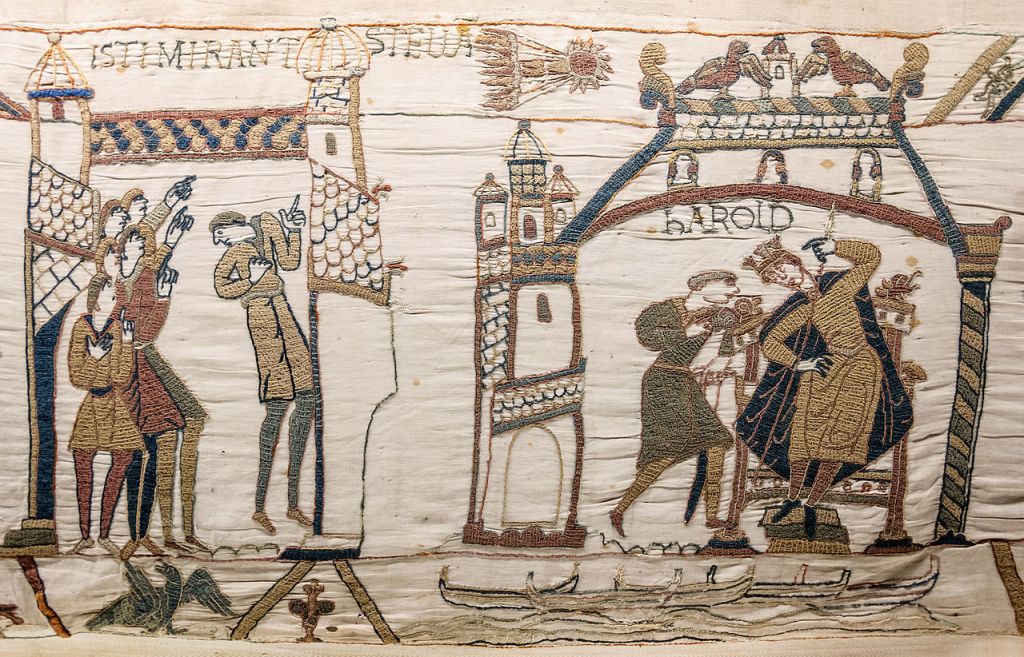Almost 50,000 people have signed a petition to stop the Bayeux Tapestry being loaned to London’s British Museum. The appeal, which was launched in July by the French art historian Didier Rykner, cites warnings from textile restorers who said that transporting the 1,000-year-old tapestry could damage its embroidered linen fabric.
The work is slated to be shown at the British Museum from September 2026 to July 2027, while its home, Normandy’s Bayeux Tapestry Museum, is renovated. The loan was announced last month by Britain’s prime minister Keir Starmer and French president Emmanuel Macron.
Rykner told The Art Newspaper that while the number of signatures on the petition isn’t enough to prevent the loan, he said “we have a year in hand, we still have time.”
He has experience in rallying support against cultural projects; he previously initiated a petition to block Macron’s decision to commission contemporary stained-glass windows for six chapels in Paris’ restored Notre Dame Cathedral. Despite garnering 294,000 signatures, the petition wasn’t successful, and Eugène Viollet le Duc’s 19th-century windows will be replaced.
Rykner’s most recent gripe has resonated with prominent French cultural figures, though, and many have spoken out against moving the tapestry.
“I think the tapestry must not be transported, for several reasons: its value is incalculable and if anything happens to it no amount of money and no other similar object can replace it,” the former director of the Bayaux Tapestry Museum, Isabelle Attard, told TAN. “It’s [also] extremely fragile because of its age, past movements over the centuries, the way it has been subjected to almost non-stop lighting since its return to Bayeux after World War 2, and the way it’s currently presented, sewn to a textile support hung from a rail on little roller bearings, creating tensions everywhere.”
Brits across the Channel have also voiced their concerns.
“What’s particularly concerning about moving works of art about is that they are so intrinsically vulnerable and susceptible to injuries caused by any number of possible or likely mishaps – knocks, vibrations, being dropped, fluctuations of temperature and humidity and so forth – and even of being lost altogether when sent by water or air,” Michael Daley, the director of conservation watchdog ArtWatch UK, earlier told The Telegraph.
Related Articles

Rykner, who is the editor of the online arts journal La Tribune de L’Art, told TAN that he hopes to unite the French and British voice of discontent to stop the exchange. The agreement is also set to include Anglo-Saxon and Medieval objects from the British Musuem move in the opposite direction.
The petition slams the loans as a “crime against French heritage.”
Macron first announced plans to loan the tapestry in 2018, in a gesture that was explicitly intended to symbolize continued connections between the UK and France post-Brexit. At the time, Macron said the tapestry would head to the UK in 2022.
But in 2021, a report found that the tapestry was too fragile to travel, posing a significant setback for the loan. Then, in 2022, it seemed as though the loan might happen again, with the Victoria & Albert Museum undertaking scholarship that might allow that London institution to ultimately exhibit the tapestry. Yet there were no follow-up reports to the Times of London one that revealed the V&A scholarship efforts.
British Museum director Nicholas Cullinan said in a statement, “This is exactly the kind of international partnership that I want us to champion and take part in: sharing the best of our collection as widely as possible—and in return displaying global treasures of the world never seen in London before to a global audience.”

